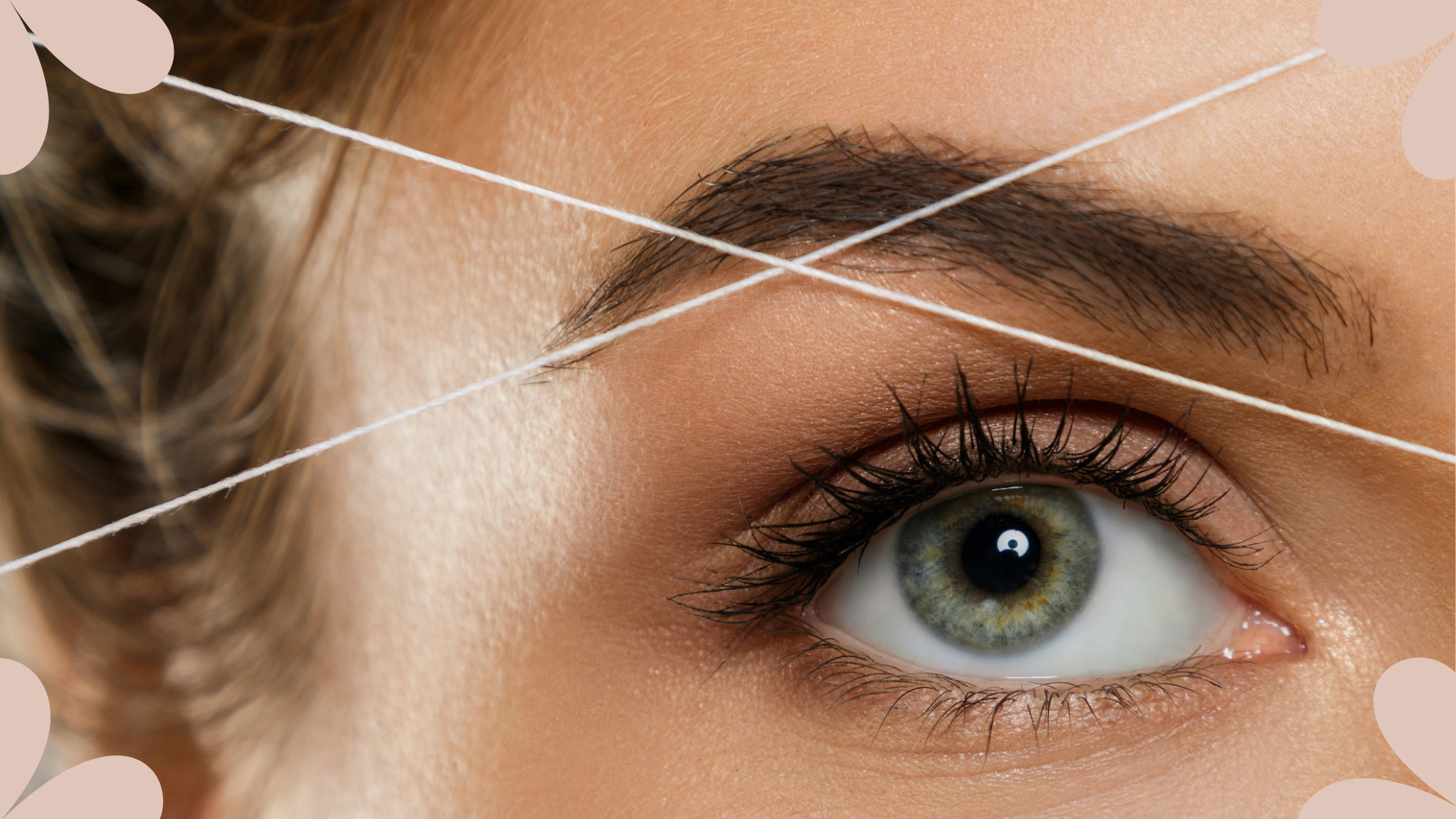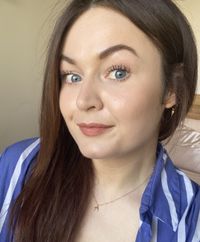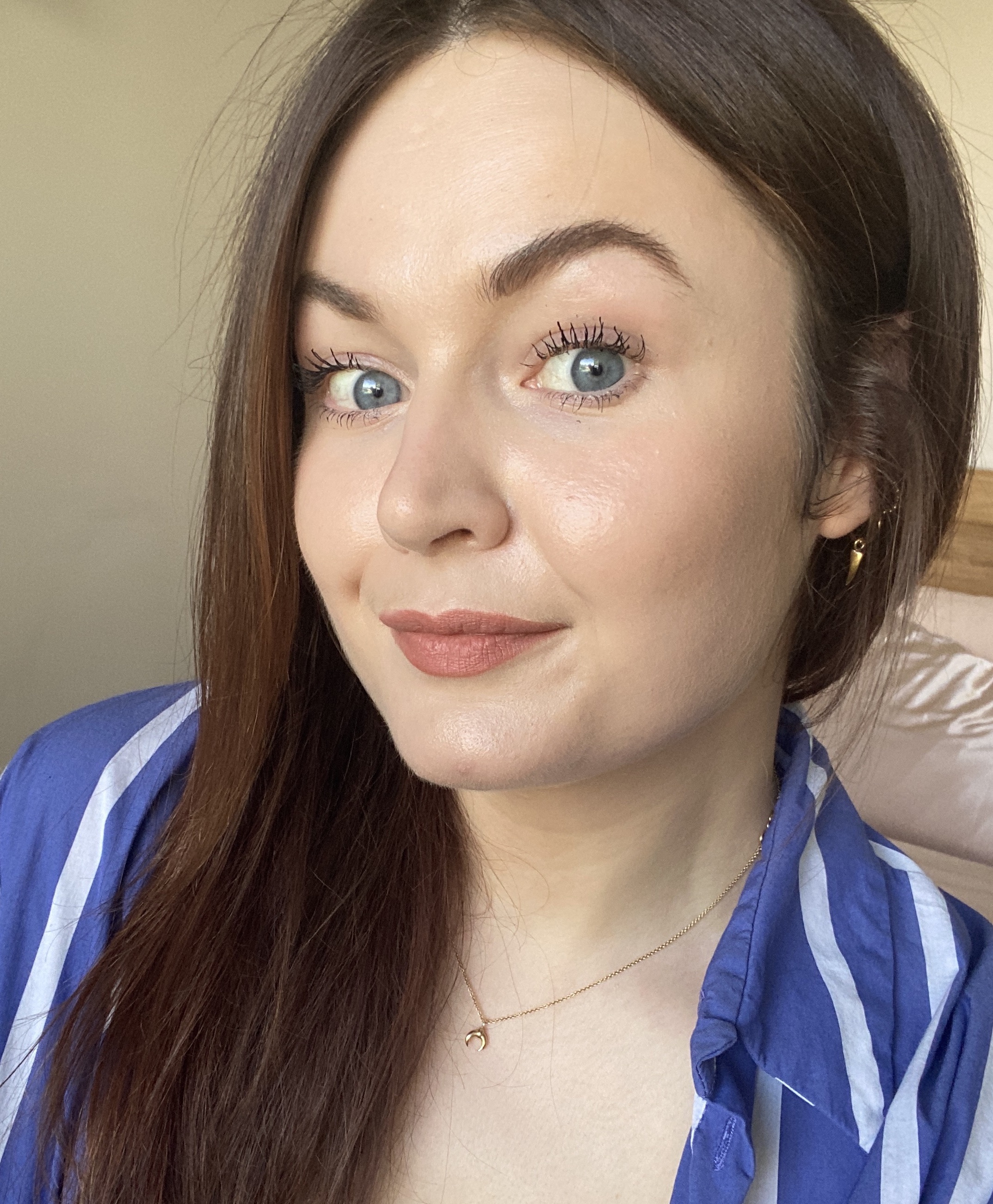9 things experts want you to know about threading before your next appointment
Threading is the gold standard in facial hair removal, so we asked leading brow experts to answer your most pressing questions about the method.


Brow experts, beauty therapists, and makeup artists alike will probably all tell you that threading is one of the best ways to get neat, fresh-looking eyebrows or whisk away stubborn facial hair. The ancient method was born in Asia and has been around for centuries – likely thousands of years, in fact – but still remains a very popular technique around the world today.
As its name suggests, the process involves removing unwanted hair from the root using twisted threads. While it’s often used to neaten up the eyebrows, threading can be carried out anywhere on the face – the upper lip, jawline, and even chin hair are all commonly threaded areas.
For those who have never been threaded, it’s understandable to have a little apprehension. Does it hurt? How long do the results last? And what will the hair look like when it grows back? Here we’ve taken a deep dive into the practice with insights from two of the industry’s leading brow experts to help you understand more about it.
Your threading questions, answered by the experts
1. What happens at a threading appointment?
Trying a new treatment can cause a little apprehension, so here's what to expect from your first-ever threading session – particularly if you are having your brows shaped. "The appointment may begin with a thorough consultation where you discuss your desired eyebrow shape, which will suit your facial features and lifestyle," explains Shavata Singh, celebrity brow & lash artist and founder of Shavata Brow & Lash Studios, who knows a thing or two about how to shape eyebrows.
The therapist will cleanse the area before beginning the threading. "[This] involves using a looped thread that is twisted and rolled over the skin to trap and remove unwanted hair," Singh continues. "The stylist holds one end of the thread in their mouth and uses their hands to manipulate the other end. They carefully manoeuvre the twisted thread to pluck the hair from the follicles." For eyebrows, the service can also be combined with a tint on the remaining hairs at many threading outposts for a real transformation.
2. How often should you thread your face or brows?
This answer is really down to you! "The frequency can vary depending on individual hair growth and personal preferences," says Sherrille Riley, founder of Nails & Brows Mayfair. "However, most people tend to get their eyebrows threaded every three to six weeks to maintain shape and keep them tidy. For other areas such as the face, upper lip, or chin, threading can be done as and when needed."
3. Does threading make hair grow back quicker?
No, this is an absolute myth. "Not at all," says Riley. "If the hairs are broken during your threading appointment then, of course, they can appear to grow back quicker. However, that will be due to their hairs not being pulled out from the root."
Sign up to our free daily email for the latest royal and entertainment news, interesting opinion, expert advice on styling and beauty trends, and no-nonsense guides to the health and wellness questions you want answered.
4. Does threading eventually stop hair growth?
Threading is unlikely to completely stop regrowth, though you may notice a difference in how quickly and thickly the hairs do so. "Through constant use the hairs can grow back weaker, softer and finer, also taking longer to grow back," Riley confirms.
5. Does threading hurt?
We won't lie to you, as with most forms of hair removal a little discomfort is to be expected – the hairs are being tugged out of the root a few at a time, after all. But it's not a massively painful experience and, for most people, it simply feels a bit uncomfortable – plus it's over quickly. We'd rate it as being far more bearable than a bikini wax and totally worth it for smooth results and perfect eyebrow shapes.
6. Is threading good for sensitive skin?
We can't guarantee it, of course, but if you have sensitive skin and haven’t had a great experience with other hair removal methods, then threading might just be the option for you. "Threading is also good for highly sensitive skins that would otherwise react to other hair removal methods, such as waxing or shaving," says Riley.
Unlike treatments like eyebrow lamination or microblading, Singh notes: "[Threading] doesn't involve the use of any chemicals or harsh substances that can potentially irritate sensitive skin. It is a relatively low-risk procedure that has minimal side effects."
7. Is threading the only good choice for facial hair removal?
Many experts agree that threading is the best choice for any kind of facial hair removal, but that's not to say that other methods should be written off completely. "Due to its popularity, threading is considered the best method to shape the brows and remove facial hairs, but this is not always accessible to everyone," says Riley. "Tweezing and waxing are good alternatives that can [still] give a sharp, well-shaped brow."
8. Should my brows look exactly the same after threading?
If you're wondering how to fix uneven eyebrows, a threading appointment is a great solution, though your arches won't be left looking exactly the same. This is a good thing. "We say that brows shouldn’t be identical twins, but sisters who complement each other," says Singh. Your neatly-shaped brows will look very similar, but they won't be carbon copies of one another.
9. And what about threading aftercare?
It's pretty normal to experience very slight redness or flushing after a threading appointment, as you would after a tweezing session. After checking you are happy with the results, your therapist will likely apply a soothing lotion to calm the skin, so this shouldn't last for too long. Don't your brows in the first couple of hours after the appointment, and avoid hot showers, saunas, steam rooms, swimming, and wearing makeup on your brows for 24 hours.
Lucy is a UK-based beauty journalist who has written for titles including Marie Claire, Glamour and OK!, as well as contributing to woman&home. Her work covers everything from expert skin and haircare advice to beauty trends and reviews of the latest products. During her career she regularly speaks to the industry's leading hairdressers, dermatologists and make-up artists, has covered backstage at London Fashion Week and interviewed many a celeb about their beauty routine.
